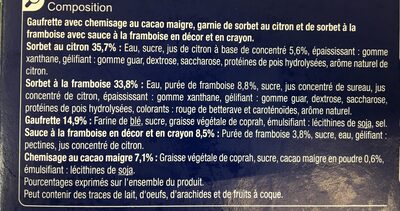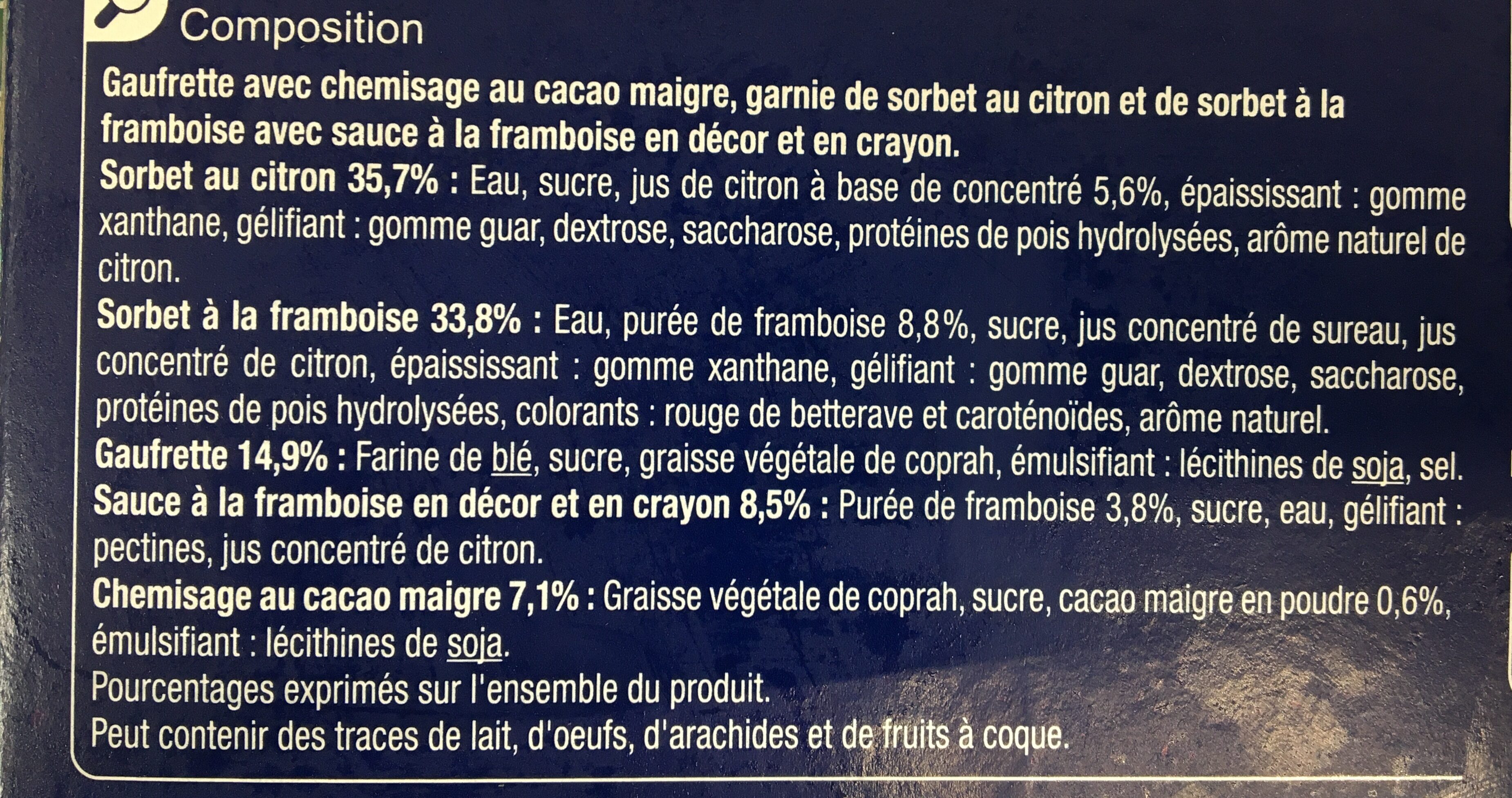Citron framboise - Carrefour - 461,4 g
Aquesta pàgina del producte no està completa. Podeu ajudar a completar-la editant-la i afegint-hi més dades a partir de les fotos ja disponibles, o fent-ne més amb l'aplicació de androide o iPhone / iPad. Gràcies!
×
Algunes de les dades d’aquest producte les ha proporcionat directament el fabricant Carrefour.
Codi de barres: 3560070820856 (EAN / EAN-13)
Nom comú: Sorbet au citron 35,7% et sorbet à la framboise, aromatisé 33,8%, gaufrette 14,9%, sauce à la framboise en décor 6,5% et en crayon 2%, chemisage au cacao maigre 7,1%.
Quantitat: 461,4 g
Marques: Carrefour
Categories: Postres, Aliments congelats, Postres congelats, Sorbets i gelats, Gelat, Cons de gelat
Etiquetes, certificacions, premis:
Punt verd, Fet a França, Comptador Nutricional
Productor: Fabriqué en France par EMB 33539 pour Interdis.
Codi de traçabilitat: EMB 33539 - Vayres (Gironde, France)
Botigues: Carrefour
Matching with your preferences
Entorn
Petjada de carboni
Empaquetament
Transport
Altres dades
Altres dades: Ces 6 cônes ne peuvent être vendus séparément. Picto GDA Laissez-vous envahir par la fraîcheur de ce cône garni d'un sorbet à la framboise et d'un sorbet au citron. Vous apprécierez son cœur de sauce à la framboise. Variez les plaisirs en découvrant les autres parfums de la gamme. Sauce à la framboise+ picto X6
Avís: ATTENTION, NE PAS RECONGELER APRÈS DÉCONGÉLATION.
Condicions de conservació: À consommer de préférence avant la date indiquée sur le côté de l'emballage et à conserver dans un congélateur *** à -18°C.
Servei al client: Interdis - TSA 91431 - 91343 MASSY Cedex - France.
Report a problem
Fonts de dades
Producte afegit per kiliweb
Última modificació de la pàgina del producte per mariacastiel.
La pàgina del producte, també editada per autorotate-bot, carrefour, date-limite-app, ecoscore-impact-estimator, musarana, openfoodfacts-contributors, org-carrefour, roboto-app, thaialagata, yuka.VFlvNFBvMExuUFVvbU04NDNrMklvT0JQd0svNVVXV09GZTB0SVE9PQ.









